P terminal force
胸部誘導のP波陰性部分の、幅(秒)×深さ(mm)をP terminal force(またはMorris指数)と呼びます。特にV1誘導のP波終末で見ることが多いのでPTF-V1(P Wave Terminal Force in Lead V1 Read )とも呼ばれます。

P terminal forceはあくまでも幅×深さであり陰性部分のみの面積ではないことに注意が必要です。
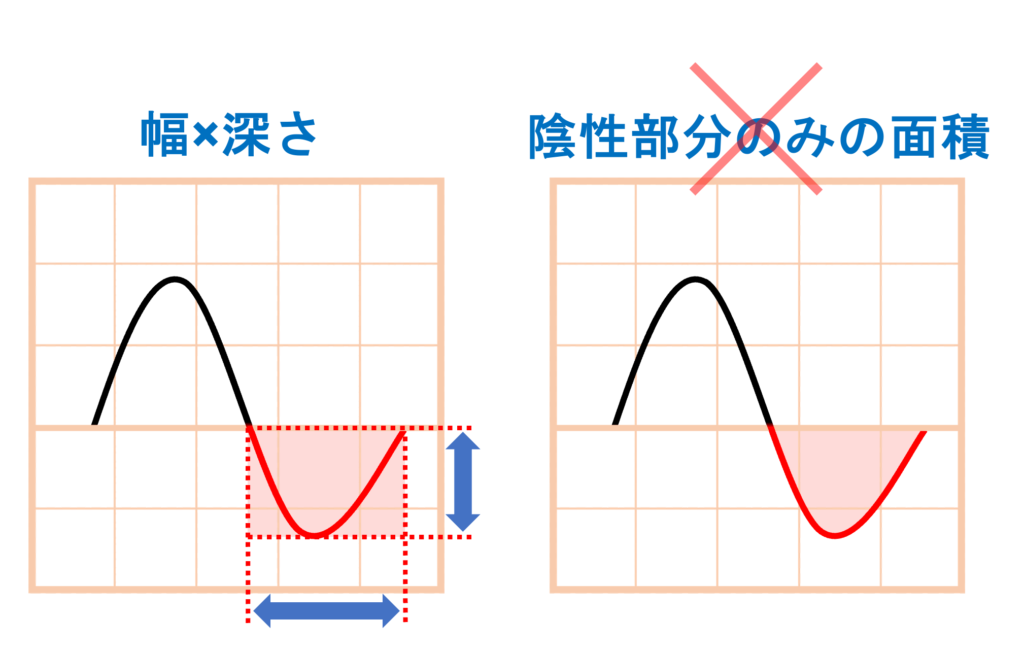
左房負荷を示唆
左房負荷では左房が拡大し、左房の興奮伝導が遅延します。左房の興奮はP波の後半部分であり、V1誘導においては遠ざかる方向の陰性成分で表されます。V1誘導ではP波はもともと二相性P波(biphasic P wave)ですが、左房拡大ではより深い陰性P波となります。
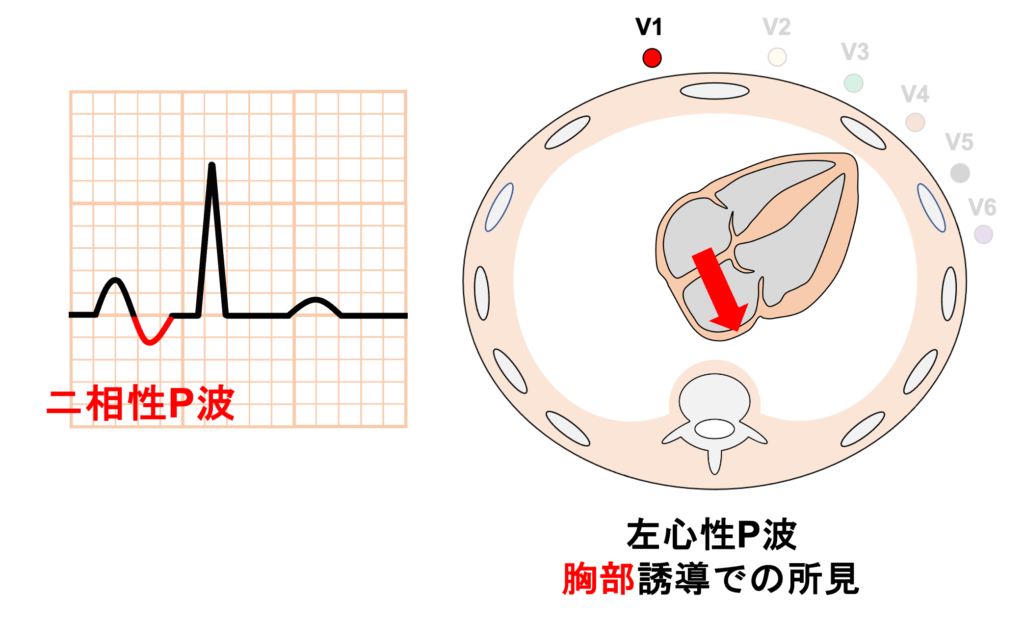
Morrisらは、V1誘導におけるP terminal force(PTF-V1)は左房負荷を定量的に評価し得る指標であると報告しました2)。左心性P波(P sinistrocardiale)と呼ばれることもあります。
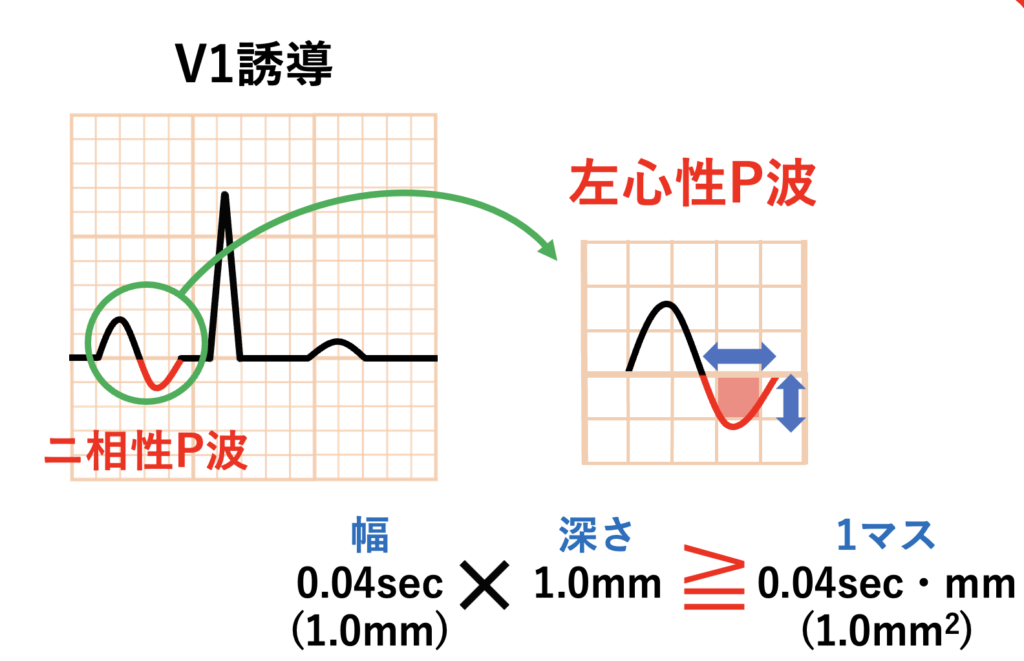
深さより幅が重要
P terminal forceの陰性成分は左房負荷以外の原因でも深くなります(漏斗胸など胸部誘導と左房の距離が近い場合、右房負荷があり陰性成分に影響する場合など)。そのため、深さ(陰性成分)より幅(P波持続時間)の方が左房負荷との関係が強いです3)。
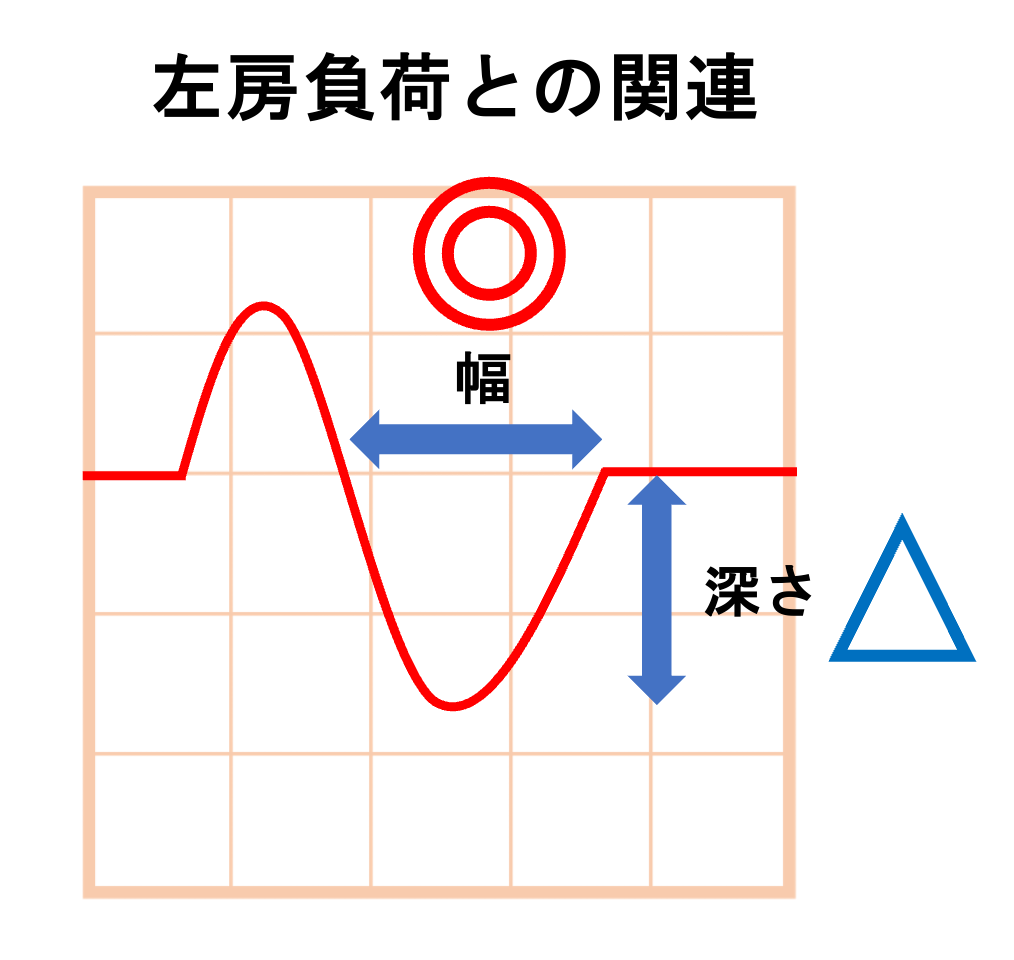
左房負荷 ≠ 左房拡大
左房負荷の所見があっても左房拡大しているとは限りません。左房負荷と左房容積は感度37%、特異度88%という報告もあります4)。
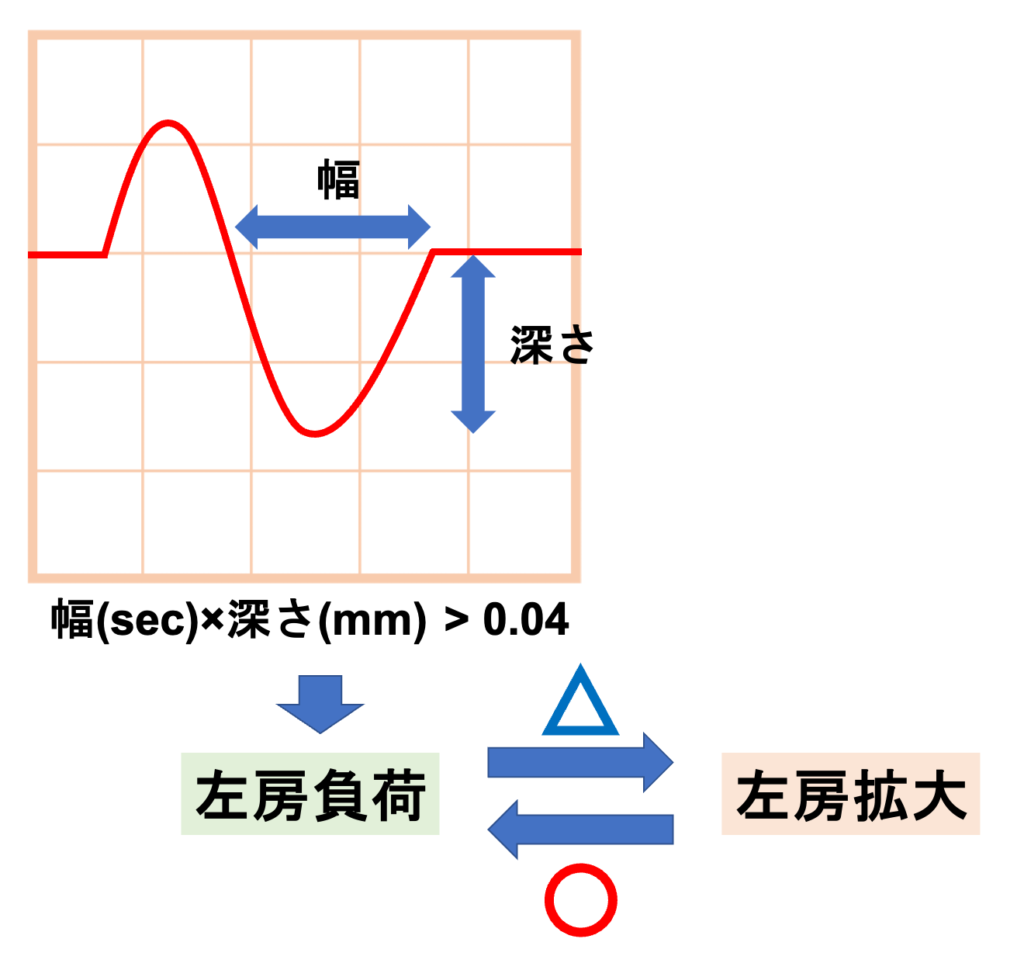
参考文献
1)Eur Rev Med Pharmacol Sci2015;19(5):767-71.
2)P-Wave Analysis in Valvular Heart Disease. Circulation 1964; 29(2): 242–252.
書籍
心電図判読ドリル P3-6
心電図マイスターによる3→1級を目指す鑑別力grade up演習 P9-10



